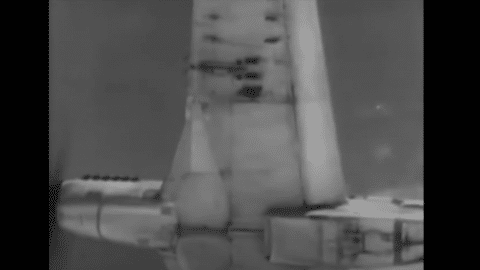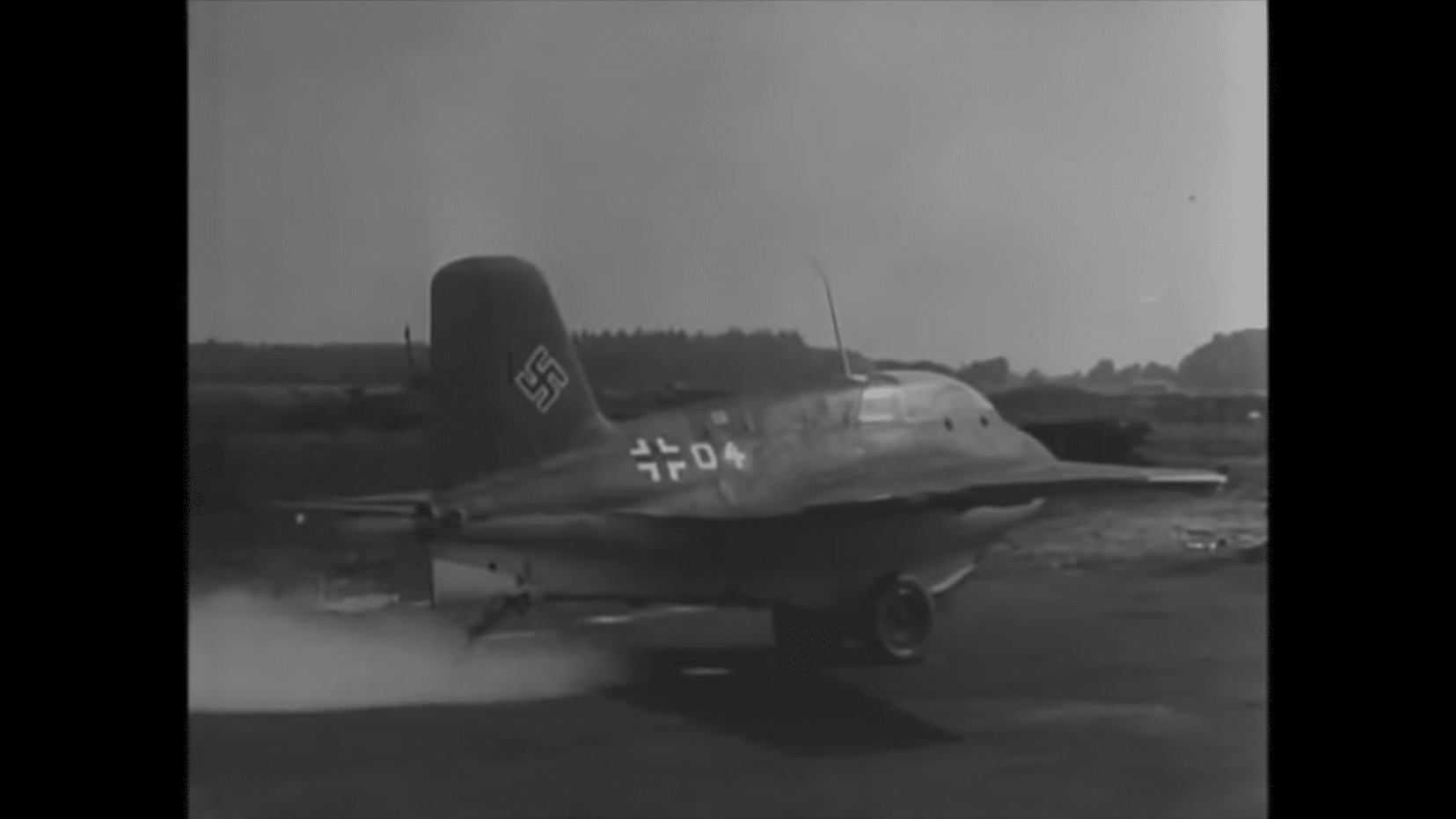
YouTube / Mark Felton Productions
The Messerschmitt Me.163B Komet was the only rocket-powered interceptor in history. It featured unprecedented performance and design, even setting a flight airspeed record of 700 mph in July 1944.
However, its fuel system used a very unstable mix of propellants that would lead to a number of Komets getting destroyed by fueling accidents. Still, over 400 B-1 versions were built – armed with two 30mm Mk. 108 cannons which proved difficult to get a hit with due to the aircraft’s high speed and climb rate.

During missions, the Komet would launch under its own power and drop a wheel assembly in the process. It would then climb rapidly to up to 40,000 ft, a tough task for its pilots inside the unpressurized cabin. They would then dive back through the bomber formation and fire short bursts in every pass.
Fortunately, its fuel only lasted 7 minutes, meaning the aircraft turned into a maneuverable glider to glide down back to base.
When the Komet entered service, they were already faster than the piston-engined Mustang escort fighters. But the Allies would soon find out that the Komet was at its most vulnerable when it glides back to its base. Regardless, there were still some instances of a P-51 Mustang dogfighting with a Me.163B Komet.

The first operational Komet squadron, the 1/Jagdgeschwader 400, was alerted on November 2, 1944, to an incoming USAF bomber formation on its way to bomb German synthetic gasoline factories. 11 Me.163s were scrambled to meet the threat.
On the other side, Captain Fred Glover of the US 4th Fighter Group was flying in a formation of P-51 Mustangs when he saw a contrail climbing rapidly towards the US bombers.

The Komet leveled with the bombers at 25,000 ft and prepared to strike. After seeing the commotion, Captain Glover quickly jettisoned his extra fuel tanks and headed for the 163 head-on.
The German plane passed in front of him as he made a quick 90-degree turn and fell behind it. Glover fired and hit the tail, wings, and cockpit from 400 yards, resulting in the Komet exploding from the center.
When Glover looked again, its tail was nearly gone while the cockpit was severely damaged.